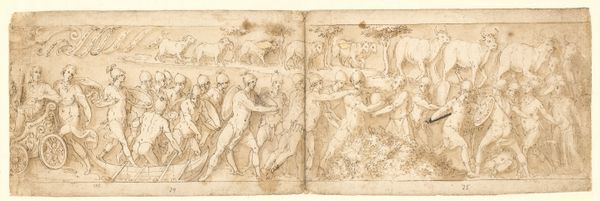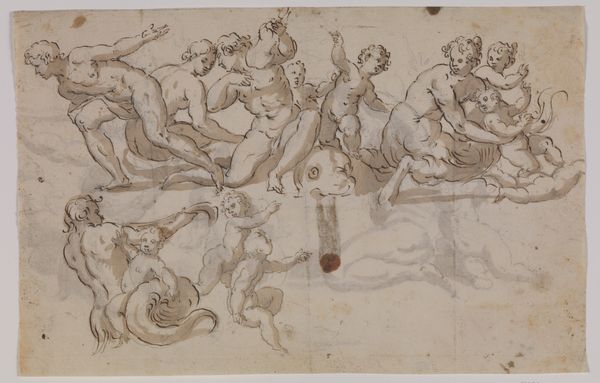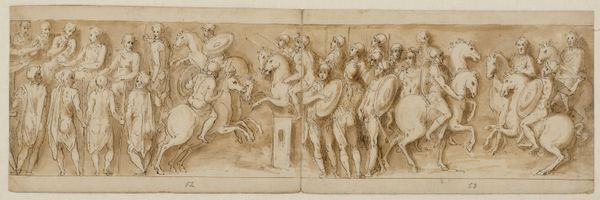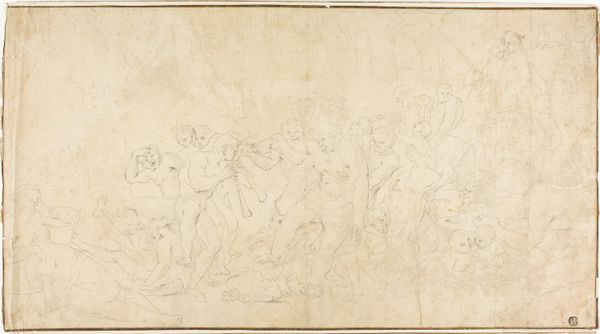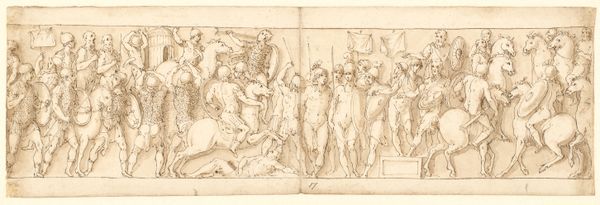
32 kopier efter Marcus Aurelius-søjlen, Piazza Colonna i Rom 1544 - 1618
0:00
0:00
drawing, ink, pen
#
drawing
#
11_renaissance
#
ink
#
pen-ink sketch
#
pen
#
history-painting
#
academic-art
Dimensions: 133 mm (height) x 432 mm (width) (bladmaal)
Editor: This drawing, "32 copies after Marcus Aurelius's column, Piazza Colonna in Rome," was created between 1544 and 1618 by Giovanni Guerra. It’s pen and ink on paper and shows multiple battle scenes crowded together. I'm really struck by how much detail is packed into what is essentially a sketch. What historical weight do you see represented here? Curator: Notice how Guerra meticulously replicates scenes from the Marcus Aurelius column, not just as a record, but almost as an act of preservation or even veneration. These copies weren't just academic exercises; they were a way to transmit the cultural memory of Rome, of its military triumphs, its leadership, and its ideals, across time. Each figure, each horse, each fallen soldier carries with it echoes of the past. What emotional effect do you think such detail might have had on viewers then? Editor: I can imagine that Renaissance audiences, being so invested in classical revival, would feel connected to Roman glory and power through the work. Like seeing a heroic ancestor, maybe? Curator: Exactly! Think about how the Renaissance artists were grappling with their place in history. Copying these reliefs was a way of aligning themselves with the grandeur of Rome. But also, consider the psychological impact of witnessing violence immortalized. Battles like this were common, then. Editor: That's a good point – violence as a form of civic identity. Were there aspects of the column that Guerra chose not to copy? Curator: An astute observation. His choices themselves become meaningful. Did he amplify the victorious or gloss over the brutal realities? We would have to compare it to the original to be sure, but even this isolated fragment reveals how powerfully symbols from the past could be re-imagined. Editor: So, the act of copying transforms the original meaning? Curator: Precisely! Guerra becomes an interpreter. These copies give new life, inviting future viewers, like us, to examine and engage with these symbols again. Editor: I’ve certainly gained a fresh appreciation for how artistic interpretation can layer new meaning on historical images. Thanks for sharing your expertise. Curator: And thank you, for offering your thoughtful perspective.
Comments
No comments
Be the first to comment and join the conversation on the ultimate creative platform.



